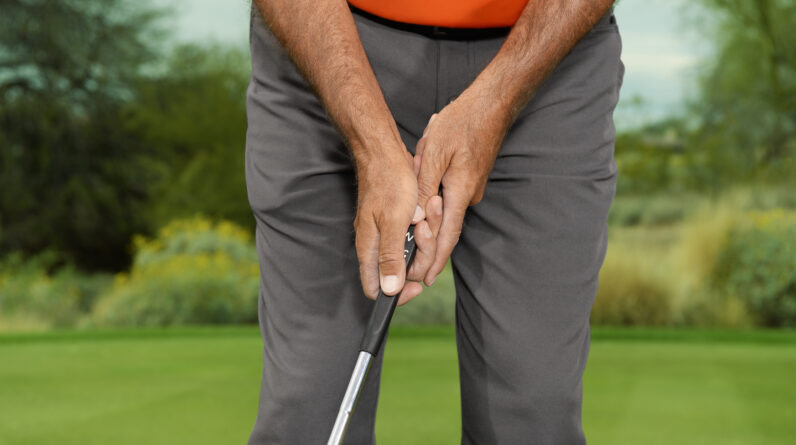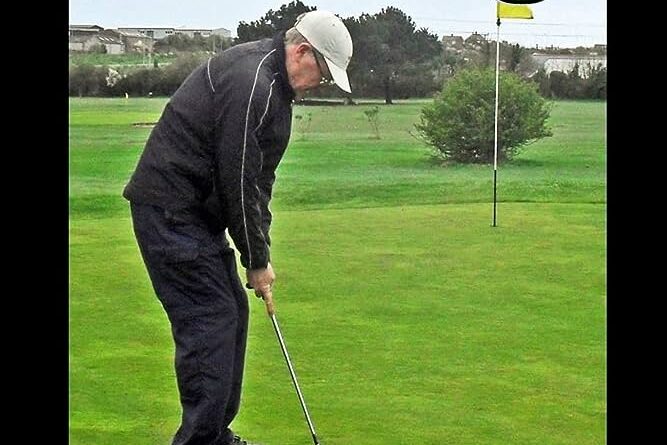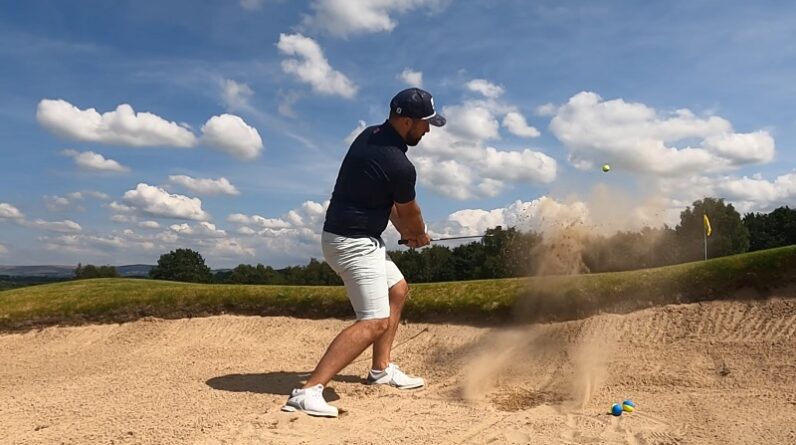In this article, you will discover the best technique to flawlessly execute a bump-and-run shot on the golf course. If you’ve ever found yourself struggling with this particular shot, fear not! With a few simple tips and tricks, you’ll be able to navigate any tricky terrain with ease and precision. From club selection to body positioning, we’ve got you covered. So, grab your golf clubs and get ready to master the bump-and-run shot like a pro!
Fundamentals of the Bump-and-Run Shot
Grip
When it comes to executing a successful bump-and-run shot, having the right grip is essential. For this shot, it is recommended to use a slightly firmer grip than normal, as it helps to control the clubface and prevent it from twisting upon impact. Make sure your grip is firm but not overly tight, allowing for a fluid and controlled swing.
Stance
Your stance plays a crucial role in determining the trajectory and distance of your bump-and-run shot. To set up correctly, position your feet shoulder-width apart with slightly more weight on your front foot. This forward-leaning stance helps promote a downward strike, allowing the club to slide under the ball rather than lifting it off the ground.
Ball Position
The ball position for a bump-and-run shot should be slightly back in your stance, near the center of your body. Placing the ball back in your stance promotes a lower trajectory and ensures clean contact with the ball, allowing for a controlled roll upon landing. Experiment with ball position to find the sweet spot that works best for you.
Club Selection
Choosing the right club is crucial for executing a successful bump-and-run shot. Generally, a wedge or a short iron with a higher degree of loft is ideal for this type of shot. The loft helps to get the ball up in the air initially, while the bump-and-run technique allows for a controlled roll towards the target. Experiment with different clubs to see which one delivers consistent results for you.
Swing Path
The swing path for a bump-and-run shot is slightly different from a full swing. Instead of the traditional arc, aim to have a more shallow swing path, allowing the club to skim just above the ground. This shallow swing path promotes clean contact and prevents the club from digging into the turf. Practice swinging with a shallow path to gain better control over your bump-and-run shots.

Preparation for the Bump-and-Run Shot
Assessing the Lie
Before executing a bump-and-run shot, it’s essential to assess the lie of the ball. Is it sitting up nicely on top of the grass? Is it buried in the rough? Understanding the lie will help you determine the level of difficulty and the adjustments needed for the shot.
Evaluating the Green
Taking a moment to evaluate the green before your shot can make a significant difference in the outcome. Consider factors such as the slope, the speed of the green, and any hazards or obstacles that may affect the roll and trajectory of your ball. By assessing the green, you can strategically plan your bump-and-run shot to land in the most advantageous spot.
Determining Shot Trajectory
The trajectory of your bump-and-run shot is crucial for its success. Depending on the distance to the hole and the contour of the green, you can choose to play a low, running shot or a slightly higher, softer shot. Assess the distance, slope, and potential obstacles to determine the most effective trajectory for your shot. Consider practicing different trajectories on the practice green to develop a reliable touch for varying situations.

Execution of the Bump-and-Run Shot
Clubface Alignment
Proper clubface alignment is key to executing an accurate bump-and-run shot. Aim to align the clubface directly at your target or slightly left of it, depending on your preferred shot shape. Ensuring the clubface is aligned correctly gives you a reference point and increases the likelihood of your ball landing where you intend.
Body Alignment
Your body alignment should follow the direction of the clubface. Align your feet, hips, and shoulders parallel to the target line or slightly left of it, depending on your shot shape. This alignment promotes a consistent swing path and helps ensure your body and club are working in sync throughout the shot.
Backswing
The backswing for a bump-and-run shot should be shorter than a full swing. Keep your backswing controlled and compact, focusing on maintaining a smooth tempo. Avoid excessive wrist hinge or lifting the club too high, as this can lead to inconsistent ball contact and trajectory.
Downswing
The downswing is where the magic happens in executing a successful bump-and-run shot. As you initiate the downswing, focus on shifting your weight slightly onto your front foot while maintaining a light grip pressure. Allow your arms and hands to lead the way, with the clubhead following closely behind. Keep the swing path shallow and avoid scooping or flipping at the ball to ensure solid contact.
Contact
Contact with the ball is crucial for a successful bump-and-run shot. Aim to strike the ball first, just before contacting the turf. This ensures clean contact and helps control the trajectory and roll of the ball. Avoid hitting the ground behind the ball, as this can lead to a poor strike and inconsistent results. Practice your timing and contact by hitting a variety of bump-and-run shots on the practice range.
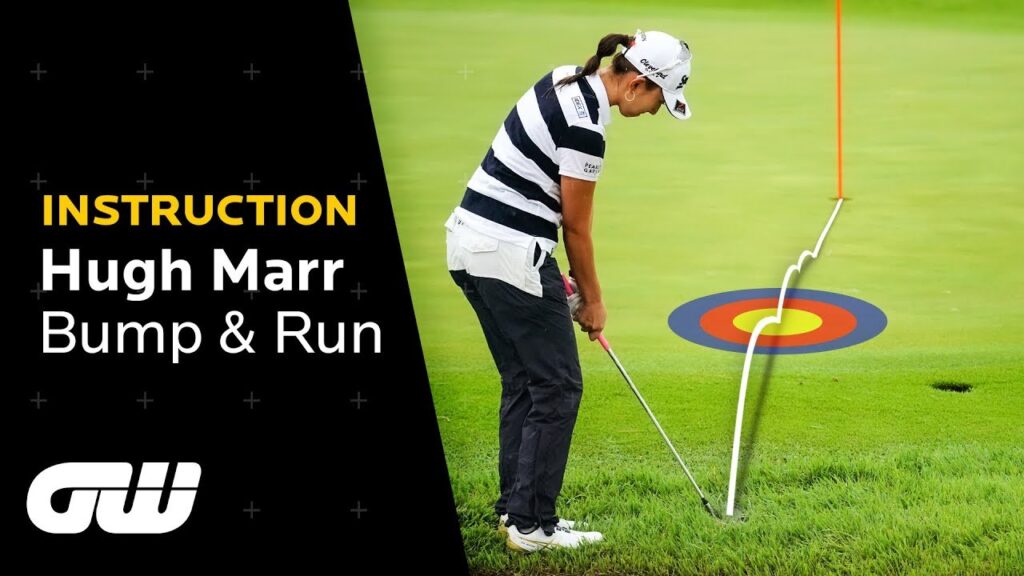
Advanced Tips to Improve Bump-and-Run Shots
Field Conditions
Different field conditions can greatly impact the effectiveness of your bump-and-run shots. Consider factors such as the firmness of the fairway, the rough, and the condition of the greens. Adjust your club selection, swing technique, and shot trajectory to account for the specific field conditions you encounter. The ability to adapt to various conditions will greatly improve your effectiveness with the bump-and-run shot.
Controlling Roll
Being able to control the amount of roll on your bump-and-run shots is essential for precise distance control. Experiment with varying the length of your backswing and the speed of your swing to achieve different amounts of roll. By mastering this skill, you’ll be able to consistently land your shots closer to the pin and minimize the risk of excessive roll or coming up short.
Uneven Lies
When faced with uneven lies, such as uphill or downhill slopes, the bump-and-run shot becomes even more challenging. Adjust your stance, ball position, and club selection to account for the lie. When facing an uphill lie, position the ball slightly back in your stance to promote a higher ball flight. For downhill lies, position the ball slightly forward to help counteract the effects of the slope. Practice on different lies to develop a versatile bump-and-run game.
Creative Shot Selection
The bump-and-run shot offers a wide range of possibilities for creative shot selection. Depending on the situation, you can choose to play a high-right-to-left shot, a low-left-to-right shot, or any variation that suits the course and your intended outcome. Experiment with different shot shapes and trajectories to expand your repertoire and become a versatile player around the greens.
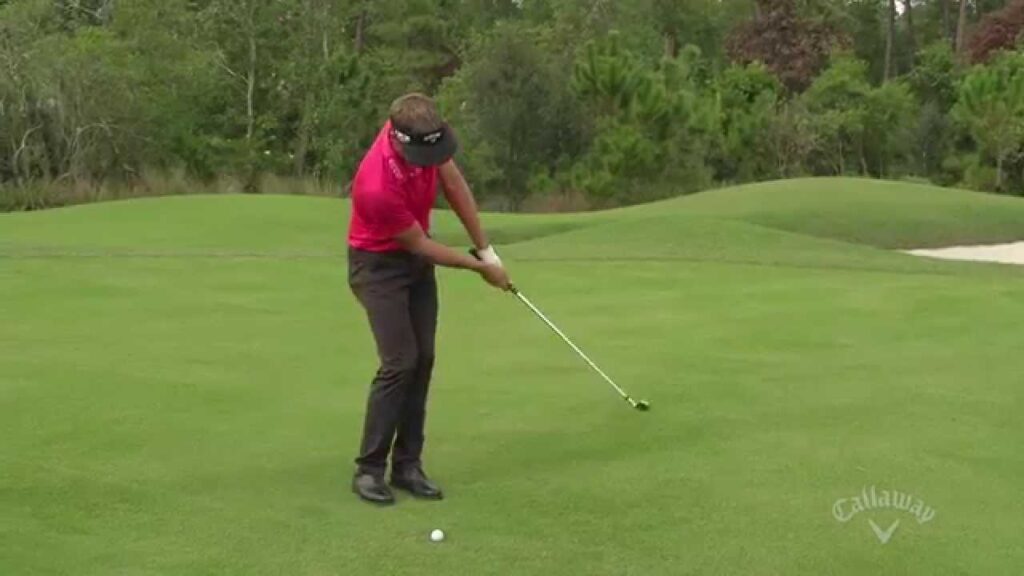
Common Mistakes to Avoid
Hitting Too Hard
One common mistake in executing a bump-and-run shot is hitting the ball too hard or with excessive force. Remember, this shot relies on controlled contact and allowing the ball to roll towards the target. Focus on smooth and fluid swing, rather than overpowering the shot. Practice your tempo and maintain a light grip pressure to avoid the temptation of hitting it too hard.
Lack of Practice
Like any skill in golf, proper execution of the bump-and-run shot requires practice. Many golfers neglect practicing this important shot, focusing more on full swings or putting. Make sure to set aside time to specifically practice the bump-and-run shot. Incorporate it into your practice routine and dedicate time to mastering the techniques and developing consistency.
Inaccurate Yardage Estimate
Misjudging the distance can lead to inconsistent bump-and-run shots. Take the time to accurately estimate the yardage to the hole to make proper club selection and plan your shot accordingly. Utilize yardage markers, GPS devices, or course knowledge to ensure you have an accurate estimate. With practice, you’ll develop a better sense of distance and gain confidence in your yardage estimations.
Poor Course Management
Effective course management is crucial when it comes to executing successful bump-and-run shots. Take into account the layout of the course, the location of hazards, and the condition of the greens. Plan your shots strategically, aiming for the optimal landing areas to set up manageable bump-and-run shots. By making smart decisions on the course, you’ll give yourself the best opportunity to execute successful shots.

Practicing the Bump-and-Run Shot
Set Up a Practice Area
To improve your bump-and-run shots, it’s beneficial to set up a designated practice area. Find a quiet spot on the practice range or use a chipping and pitching area to work on this shot. Dedicate time to practice with different clubs, trajectories, and distances to gain a better feel for the shot.
Varied Distances and Lies
Repetition is key in mastering the bump-and-run shot. Practice with different distances and lies to simulate real course scenarios. Whether it’s a short chip or a longer bump-and-run, challenge yourself to hit various shots with accuracy and consistency. Experiment with uphill, downhill, and sidehill lies to develop proficiency in adjusting your technique based on the lie.
Experimenting with Clubs
While wedges and short irons are commonly used for bump-and-run shots, don’t be afraid to experiment with different clubs. By trying out different clubs, you may discover a preferred club that gives you more control or better results. Each club will produce a slightly different trajectory and roll, so practice with different options to find what works best for you.
Measuring Consistency
To gauge your progress and improve your bump-and-run shots, measure consistency in your performance. Keep track of the distance and accuracy of your shots. Note any patterns or areas that need improvement. By measuring your performance regularly, you’ll be able to identify areas that require more focus and practice.
Mastering the bump-and-run shot takes time, practice, and patience. By focusing on the fundamentals, preparing effectively, and executing with precision, you’ll enhance your short game and become a more versatile golfer. Incorporate these tips into your practice routine and watch as your bump-and-run shots become a valuable weapon in your golfing arsenal.

